How to physically install your Ring Video Doorbell (2nd Generation) with an existing doorbell
Installation must be carried out by a qualified electrician. Refer to your local laws and building codes before performing electrical work; permits plus professional installation may be required by law.
For your safety, only use an existing doorbell transformer within the range specified below or compatible Ring accessories to power your device.
For connecting to an existing doorbell system:
- Hardwired transformer (8 to 24 VAC, 50/60Hz, 5VA to 40VA)
Ring accessories are sold separately and may include:
- Plug-In Adapter (24Vdc, 500mA)
- Solar Charger (5.2Vdc, 100mA or 109mA)
- Solar Panel (5Vdc, 380mA/480mA/800mA)
Using incompatible power sources can damage your device and cause electric shock.
Note that you should set up your Ring Video Doorbell in your Ring app before mounting it to your home.
Setting up your Ring Video Doorbell (2nd Generation) in the Ring app.
Included installation hardware
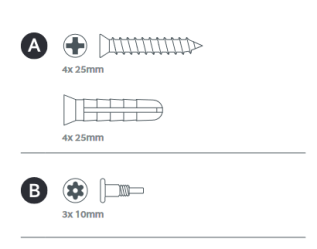
1. Charge the built-in battery.
- Fully charge the built-in battery by plugging it into a USB power source using the provided orange cable.
- When only one of the two LEDs on the battery is lit, the battery is fully charged.
Click here for more information on charging your Ring battery.
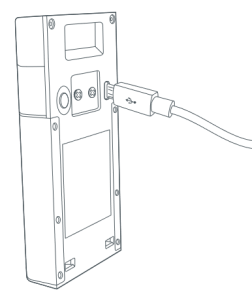
2. Set up your Ring Doorbell near your wifi router.
In the Ring app, select Set Up a Device and follow the in-app instructions.
3. Try it out.
After setup, push the button on the front of your Ring Doorbell to see video from the camera in the Ring app.
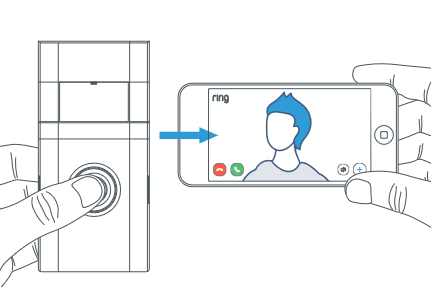
If you have problems with video quality after installation, you may need to move your router closer to your door, or add a Ring Chime Pro. Learn more at ring.com/chime-pro.
4. Install your Ring Doorbell.
For the best results, mount it around 1.2 metres above the ground.
If you're connecting to existing doorbell wiring that's higher than four feet and want to angle your Ring Doorbell down for a better view, you can purchase a Wedge Kit online at ring.com/accessories.
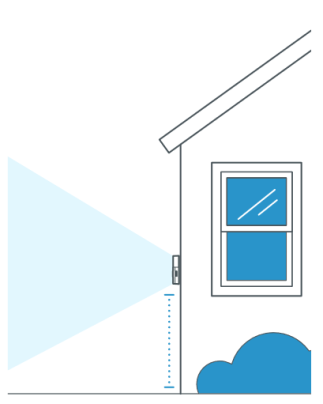
5. Turn off power at the consumer unit and remove your existing doorbell.
Turn off power at the consumer unit.
Once power is turned off, remove the doorbell button from the wall and disconnect the wires.
Your Ring Doorbell is compatible with doorbell systems supplying 8 to 24 VAC, 50/60Hz, 5VA to 40VA.

6. Mark the screw holes.
Use the bracket as a template to mark the four corner holes.
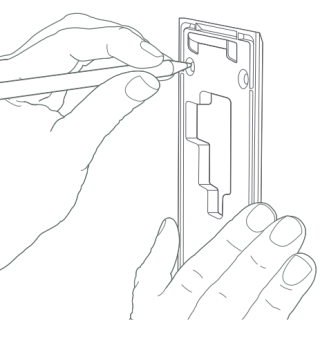
7. Optional: Install the wall anchors.
You'll need to install wall anchors when installing on stucco, brick or concrete.
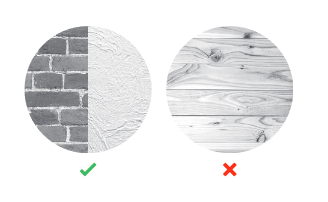
Grab 4 of the wall anchors from Bag A. Using your Ring Doorbell as a template, mark 4 drill holes on the wall. Use a 6mm masonry drill bit (not included) to drill the holes, then insert the 4 wall anchors.
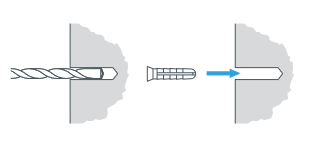
8. Install the mounting bracket.
Feed the wires through the hole in the mounting bracket.
Using a Philips head screwdriver, drive the mounting screws from Bag A into your wall (or into the anchors, if installed) until they are flush with the mounting bracket.
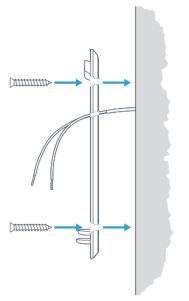
9. Connect the wires.
Connect the wires coming out of your wall to the screws on the back of your Ring Doorbell. Either wire can connect to either screw. The order doesn't matter.

CAUTION! If wiring directly to a doorbell transformer, connect a 25 ohm, 50 W wirewound resistor in series with one of the doorbell wires to protect your Ring Doorbell. Do not connect to a DC transformer, halogen or lighting transformer, or intercom.
10. Attach your Ring Doorbell to the mounting bracket.
Hook the slot on the rear of your Ring Doorbell onto the tab near the top of the mounting bracket.
Then, let the doorbell pivot down to sit flush on its bracket.
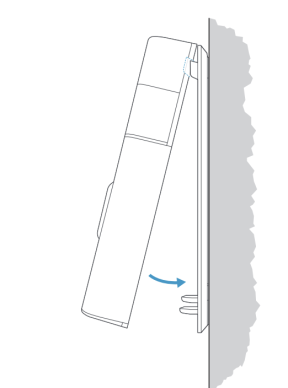
11. Secure the doorbell.
CAUTION! If you use the wrong screws to secure the doorbell, you could damage the battery during installation, create a fire hazard, and be seriously injured.
DO NOT USE any screw other than the included short security screws when securing your Ring Doorbell to the bracket.
Use the star-shaped end of the included screwdriver to insert and tighten two of the security screws from Bag B into the bottom of your Ring Doorbell.
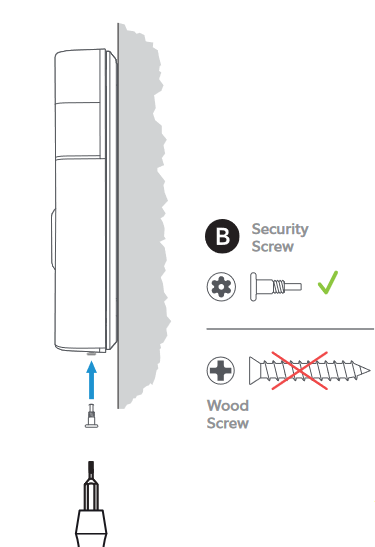
12. Restore power at the consumer unit.
Turn power back on at the consumer unit. It may take a moment for your Ring Doorbell to power on. You'll know it's ready once it lights up and speaks.
Your Ring Doorbell is now ready to use.
Once you have hardwired your Ring Video Doorbell (2nd Generation) to your existing doorbell system, you can set up an in-home chime in the Ring app if want to still hear your old chime. Learn how to configure your doorbell for an in-home chime.
